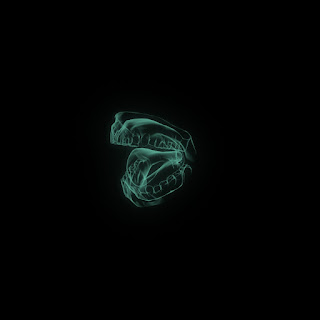 |
| Fig 1: Psycho Poster |
Beginning in a manner similar to Crime Thriller, starting with the theft of $40,000, until a sudden twist in the plot turns it into a darker psychological horror. Alfred Hitchcock's 1960 hit film, Psycho shocked audiences at its release, continues to shock modern audiences with its plot twists and suspense. Considered to be one of Hitchcock's best films, Psycho, based on the novel of the same name, was a low budget production filmed in black and white as to cut back on prop expenses. What it lacked in colour, the film made up for in an intelligent, suspenseful plot with interesting and deep characters, especially the character of Norman Bates, owner of the Bates Motel with his mother.
 |
| Fig 2: Bates Motel with Norman Bates visible in the office doorway |
Starting with the theft of a grand sum of money, Marion Crane runs away from her employer in the hope to make it to California, planning to give to her boyfriend Sam to get him out of debt so that they could get married. She is followed by a Policeman who is suspicious over her actions and reasons to drive out of state on her own and her rushed to buy a new car. The audience is led to believe that this is film about whether or not Marion will get caught with the money or if she'd make it to California. However this changes when she find herself outside of the Bates Motel. She meets the seemingly harmless motel owner Norman. Everything seems fine until a fateful and iconic scene in the shower that changes the flow of the entire film. Marion, the supposed leading lady of the film is killed in such a gruesome way, shocking audiences of the time. While the stab wounds are not shown but hinted at, the way that the camera continuously cuts between Marion, the killer and the knife striking. It's a wonderful demonstration of hinting at horror rather then showing it, something that horror movies preceding can't portray in the same way. "The ruthless slicing wasn't of flesh, but of film: 70 shots in 45 seconds"(Jake Coyle, Huffington Post)
The amount of aftercare her murderer takes in the clearing up of the body is agonisingly long that it gives viewers a chance to grieve over the sudden death of a character that was empathised and was rooted for. This scene is now deeply routed in pop culture in the modern era, with the iconic suspenseful shower scene and blaring string motif parodied in various television shows and movies. It also spawned a new genre of film, the slasher movie, its influence demonstrated in almost every horror following it.
The amount of aftercare her murderer takes in the clearing up of the body is agonisingly long that it gives viewers a chance to grieve over the sudden death of a character that was empathised and was rooted for. This scene is now deeply routed in pop culture in the modern era, with the iconic suspenseful shower scene and blaring string motif parodied in various television shows and movies. It also spawned a new genre of film, the slasher movie, its influence demonstrated in almost every horror following it.
 |
| Fig 3: Marion screaming in the iconic shower scene |
 |
| Fig 4: The Truth about Mother |
Norman Bates as a character is striking. Seemingly a kind and polite man who just loves his mother a little too much that he's still dependant on her. The fact that he has a split personality that makes him don a dress and a knife, makes him extremely dangerous despite his pretty face and shy mannerism before the shift. His love of taxidermied birds, resonates in the film in other ways then just stuffed birds. Marion's surname, the city she's from of Phoenix Arizona, the strategically placed cameras that show birds in every shot in the room behind the office at the motel and the constant use of birds eye view shots when characters climb the stairs in the Bates house. The use of the camera in this way could be used to symbolise a bird of prey looking down at their next hunt, emphasised in that the murder of the detective was done in this camera angle. Despite this however, you are still drawn in by his dorky charm and submissive mannerisms that some people assume that the character focus after the shower scene is him.
 |
| Fig 5: Mother's Monologue Scene/ Ending Scene |
However it does help in explaining what couldn't be told in that scene prior. As to why Norman acted the way he did, and as to what Mrs Bates' personality was like when she was alive. This is also present in the chilling final monologue by Mother herself, the now dominate personality of Norman Bates.
Despite that, Psycho is still an amazing experience of twists and turns that builds up the tension gradually before letting it loose in unique and unexpected ways, Hitchcock shows other directors and film makers how its done in this film and it is an amazing experience to see.
Bibliography:
Images
Poster: http://www.bernardherrmann.org/wp-content/uploads/2011/07/psycho-4.jpg
Bates Motel: http://www.retroweb.com/universal/univ_psycho_frame_b.jpg
Shower Scene: http://www.gannonknight.com/wp-content/uploads/2015/10/Psycho.jpg
Truth about Mother: https://blogger.googleusercontent.com/img/b/R29vZ2xl/AVvXsEjwgL-Nqse34xgqCiQtti7vHnAx5ujp6SUhuJ-bKfBNzGiGq0FvgE8L3nZOp5JHDQxIS0wPg3O7Y2PGzXBLSLy4FZ5_Fj-3DUdGMjYCE0vc5oFTXydRc1ypTeFQDGVUcJTglJ72tbFl7ogH/s1600/Psycho+9.jpg
Ending Scene/ Mother's Monologue: https://whileyousleep.files.wordpress.com/2012/06/psycho-norman-bates-straigh-jacket-blanket.jpg
QuotesJake Coyle from the Huffington Post: http://www.huffingtonpost.com/2012/11/23/psycho-shower-scene_n_2177160.html
Mark Monohan from the Daily telegraph: http://www.telegraph.co.uk/culture/film/filmreviews/11025424/Psycho-review.html
Emanuel Levy: http://emanuellevy.com/review/psycho-1960-3/
Bates Motel: http://www.retroweb.com/universal/univ_psycho_frame_b.jpg
Shower Scene: http://www.gannonknight.com/wp-content/uploads/2015/10/Psycho.jpg
Truth about Mother: https://blogger.googleusercontent.com/img/b/R29vZ2xl/AVvXsEjwgL-Nqse34xgqCiQtti7vHnAx5ujp6SUhuJ-bKfBNzGiGq0FvgE8L3nZOp5JHDQxIS0wPg3O7Y2PGzXBLSLy4FZ5_Fj-3DUdGMjYCE0vc5oFTXydRc1ypTeFQDGVUcJTglJ72tbFl7ogH/s1600/Psycho+9.jpg
Ending Scene/ Mother's Monologue: https://whileyousleep.files.wordpress.com/2012/06/psycho-norman-bates-straigh-jacket-blanket.jpg
QuotesJake Coyle from the Huffington Post: http://www.huffingtonpost.com/2012/11/23/psycho-shower-scene_n_2177160.html
Mark Monohan from the Daily telegraph: http://www.telegraph.co.uk/culture/film/filmreviews/11025424/Psycho-review.html
Emanuel Levy: http://emanuellevy.com/review/psycho-1960-3/













































